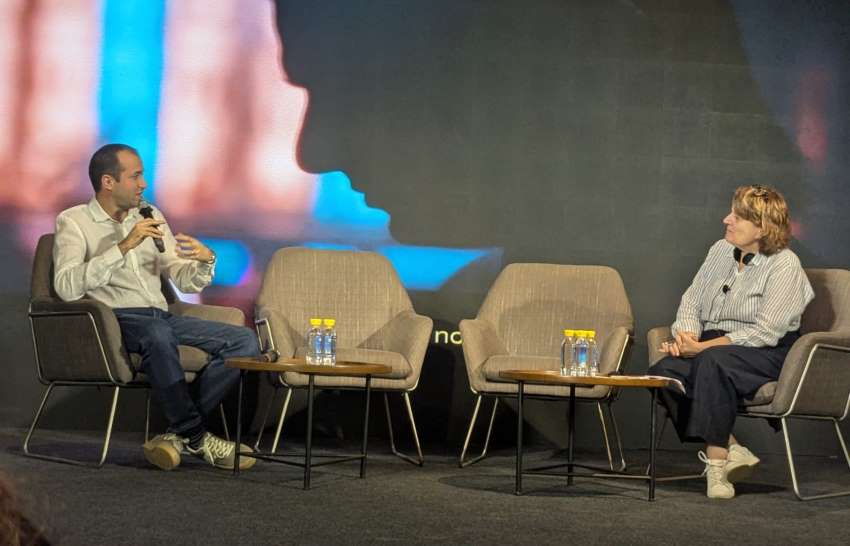FW
The Reserve Bank of India has kept short-term bank rates unchanged. And manufacturers in the capital-intensive knitwear sector have hailed the decision. The repo rate was cut by 25 basis points during the monetary policy review in April. But they say banks should reduce the base rates proportionately in tandem with the reduction in credit policy repo rates, which did not happen on the previous occasions when the repo rates were cut.
The apex bank has kept the policy repo rate (the rate at which RBI lends to commercial banks) under the liquidity adjustment facility unchanged at 6.5 per cent and the cash reserve ratio at four per cent of the net demand and time liabilities.
There is also an opinion that the RBI should effectively monitor the calculation of base rates to ascertain whether the banks use only the marginal cost of funds method. Presently there is no transparency in the banking system for consumers to understand how the base rates are fixed by various banks after every reduction in the short-term bank rates announced by RBI. Without the proper transmission of the rates, especially in the case of older loans, consumers are not going to get loans at lower interest rates.
Pitti Uomo is warming up for its number 90th edition, which will take place from June 14 to 17, 2016 in Florence, Fortezza da Basso. The event will host 1,219 brands and collections, including 536 exhibitors from abroad (44 per cent of total companies participating); all focusing on men’s fashion novelties for spring/summer 2017.
While paying tribute to their number 90th edition, Pitti will play with numbers according to this season’s main theme ‘Pitti Lucky Numbers.’ Installations, graphics and layout solutions will be inspired by numbers and figures, a trend also influencing many fashion brands for some seasons now.
The event will host various newcomers including some significant younger fashion and sneaker brands. Among them there are Department 5, a military inspired sportswear brand, and Doppia A, a casual chic men’s line. Another new brand is Dictionary Project, offering tops and sweats characterized by prints and applications. Also debuting sneaker brands include Pony, a historical US sneaker brand returning to Europe, Master of Art-MOA, an innovative sneaker brand designed by artist Thoms, and Mizuno 1905, a new capsule collection originating from the renowned Japanese sports brand.
Piave Maitex, the Italian knitted fashion fabrics producer has come up with a double sided fabric for shape wear, providing moisture management and thermal regulation. The company uses a double-sided knit-mode. One of the sides aims to ensure freshness and breathability. The other side, in microfiber, is designed to ensure wicking and moisture dissipation to the outside. Piave Maitx offers a range of new technological fabrics as well as a new collection of printed lingerie.
The company is a leader in stretch mesh. It combines the sensuality of extreme lightness and transparency with the technical features necessary for comfort. The new mesh fabrics are made from extremely fine yarns, microfiber to enhance softness, monofilament for a touch of sensuality, with a high percentage of elastomer for a perfect fit. These fabrics aim to embody seduction in intimate apparel.
Neotech 2.0 is the company’s latest cutting-edge knitting solution, especially soft and comfortable thanks to fine microfiber yarn, expressing the ideal application for a sophisticated, seductive and modeling lingerie mainly characterized by transparency. Romantic is all about floral designs, colored with soft hues to make this the most romantic theme of the collection, in which delicate petals of flowers lie on transparent water colored, cream and powder pink grounds.
The export value of the Myanmar garment industry is expected to reach over $2 billion. Previously, garments were exported only to the US and the European Union. Over 50 per cent of Myanmar garments were exported to the US while 40 per cent went to the EU. However, after economic sanctions were lifted, Myanmar industry has turned towards South Korea and Japan as well. Entrepreneurs from EU nations have aim to invest in Myanmar companies.
Garment factories in the country are required to maintain workers’ rights and stable workplace industrial relations. Around 300 companies are exporting their products to foreign markets. Currently, there are a total of 240 garment factories in Yangon with a total labor force of 2,20,000.
Myanmar is a former British colony known as Burma. The country emerged from decades of military dictatorship in 2011 and major US and European sanctions shortly thereafter. It now offers some of the cheapest labor in the world combined with easy access to Asian markets -- both attractive features for corporations looking to source low-cost, readymade garments for export. The country has lower labor costs than do Vietnam, Cambodia or Bangladesh.
Due to tight supplies during the drought, cotton exports from India, the world’s biggest producer, have nearly halted as local prices have rallied, forcing key importers like Bangladesh, Pakistan and Vietnam to turn to other suppliers.
The freeze in Indian export will prompt Brazil, Australia and United States to raise shipments and has pushed global prices to near their highest since August. The price rise could subsequently push up fabric and clothing prices and put pressure on the margins of garment makers. In last three-four weeks Indian exporters could not sign a deal.
Meanwhile, the landed cost of Indian cotton for buyers in Pakistan and Bangladesh is at 75 cents to 76 cents per lb compared to around 73 cents for Brazilian cotton. Pakistan and Bangladesh prefer Indian cotton due to lower freight charges. Local cotton spot market prices have surged 10 per cent from a month ago to Rs 38,400 per candy of 356 kg (73.5 cents per lb) due to limited supplies after consecutive droughts cut production. A candy is equivalent to about two Indian bales of 170 kg each.
According to Cotton Association of India, India may produce about 34.1 million bales of cotton in the 2015/16 season that started on October 1, down from last year’s output of 38.3 million. India has exported around 6.5 million bales of cotton so far during the 2015/16 season, with Bangladesh and Pakistan accounting for more than half of the total exports. In 2014/15 India exported 6 million bales.
Sensoria a leader in a global leader in wearable fitness and smart garment technology, has come up with a new smart line of colorful sports bras and tees and training plans offered through a new version of the Sensoria Fitness v2.0 app. The new app connects to heart rate monitoring garments and can detect cardiac irregularities. The algorithm will constantly monitor the user’s probability of cardiac irregularities during exercise and alerts selected family or friends through text message.
This means athletes can get advanced cardio training through comfortable heart rate zone, heart rate variability and cardiac irregularity alert tracking. This new smart garment line has been designed with distance runners, cyclists, and fitness enthusiasts in mind.
Sensoria has colorful and stylish heart rate monitoring garments. Each Sensoria garment is made with Emana yarn, the technically advanced and durable fabric that uses far infrared technology. Along with keeping the wearer dry, comfortable and protected from the sun’s harmful UV rays, Emana yarn improves skin elasticity to reduce the appearance of cellulite and aid with muscle fatigue prevention.
Sensoria has always been at the forefront in developing new smart garment, sensor-infused technology. Fitness enthusiasts not only want to have access to the latest tech but also be fashion forward. Sensoria garments paired with the new fitness app seamlessly combine these needs and offer high quality, comfortable heart rate monitoring available in exciting new colors and sleek styles.
Bangladesh’s exports are homing in on the target of $33.5 billion for this fiscal after May's receipts took the tally to a touching distance. According to data from the Export Promotion Bureau, Bangladesh received $3.03 billion from exports in May, up 6.69 per cent year-on-year. May's exports take earnings in the first 11 months of fiscal 2015-16 to $30.67 billion. The government has set a doable target of $2.83 billion for June. Full-year receipts of $33.5 billion would be a record for Bangladesh.
Garment, which typically accounts for 80 per cent of the country's export earnings, led the charge, bringing home $2.45 billion last month, up 9.35 per cent year-on-year. The future trend for garment exports from Bangladesh is good, believes Siddiqur Rahman, President of Bangladesh Garment Manufacturers and Exporters Association (BGMEA).
According to BGMEA, Bangladesh's garment exports are looking up for two reasons: the country is receiving the work orders that are being shifted in bulk from China and are producing value-added items. The international retailers have been placing work orders in Bangladesh due to the higher costs of production in China, the largest garment exporter in the world.
Bangladesh’s export earnings from the United Kingdom in 11 months of the current financial year grew by 19.10 per cent to $3.44 billion from $2.89 billion in the same period of the financial year 2014-15 due to an encouraging performance of the readymade garment sector.
Besides, Japan has already appeared as an emerging market for Bangladesh and the earnings from the market in the July-May period of FY16 stood at $981.92 million with a 17.12-per cent increase from $838.34 million in FY15, according to the Export Promotion Bureau (EPB) data released recently.
Both the markets have shifted their procurement orders to Bangladesh from China due to price competitiveness and they hoped that export growth in the destinations would increase further in the coming days, experts and exporters.
Moreover, Britain is a cosmopolitan nation and the huge number of tourists in the country is the buyers of garments and they want middle and lower-end products. The UK is shifting their procurement orders to Bangladesh from China as the world’s second biggest economy is shifting its production to high-end and high-tech, according to Anwar-ul Alam Chowdhury Parvez, a former president of Bangladesh Garment Manufacturers and Exporters Association (BGMEA).
He said that Vietnam could be the China plus country (import source alternative to China) for the UK but Vietnam shifted its production to high value-added products and Bangladesh gained the market share previously held by China in the UK.
Uncertainty over Britain’s continuation in EU has hit a third of businesses in the UK’s manufacturing sector, which barely scraped growth in May, says a recent study. Foreign demand for goods from British factories fell for a fifth month as firms reported customers were unwilling to commit to investment ahead of the June 23 referendum.

Uncertainty over Britain’s continuation in EU has hit a third of businesses in the UK’s manufacturing sector, which barely scraped growth in May, says a recent study. Foreign demand for goods from British factories fell for a fifth month as firms reported customers were unwilling to commit to investment ahead of the June 23 referendum. CIPS survey of the 427 businesses reported 27 per cent saying a potential Brexit was having a detrimental impact on business, while a 8 per cent said impact was a strongly detrimental. However, 50.8 per cent said they expected it to have no significant effect.

And as CBI Director-General, Carolyn Fairbairn has warned that leaving the EU could cause a serious shock to the UK economy, with a potential cost to UK GDP of £100 billion and 950,000 jobs by 2020 and negative echoes that could last many years after that. Indeed, when talks about Britain’s exit from the EU first started in early 2015, it seemed absurd. The idea of putting the matter to a direct public vote appeared unlikely, an actual “Brexit” seemed completely implausible. But 18 months later, with a national referendum just weeks away and public sentiment stirred up by an unprecedented migration crisis on top of the on-going European debt crisis, which has seen countries like Greece bailed out by the rest of the Eurozone, opinion polls on Brexit are much too close for comfort for British prime minister David Cameron, who has staked his political future on a “Remain” vote.
Brexit impact on textiles industry
While experts say Brexit would affect manufacturing, the textiles and fashion industry is expected to take a hard hit both in UK and across the world. UK’s fashion industry contributed an estimated £26 billion to the economy in 2014.
To begin with under the ‘FTA scenario’, the UK negotiates a free trade agreement with no tariffs on exports and imports between the UK and Europe by 2020. As it is no longer in the single market, it experiences a modest rise in non-trade barriers. The UK is assumed to maintain existing free trade agreements with other countries currently held by the EU, and signs a new trade deal with the US. The ‘WTO scenario’ is based on the UK failing to secure a deal with the EU and therefore, trading under World Trade Organisation rules after leaving. Tariff and non-tariff barriers with the EU rise significantly. The UK loses its existing free trade agreements with other countries, but renegotiates them on the same terms by 2026 and signs a deal with the US in the same year. If the UK leaves the EU without a free trade deal, 90 per cent of British exports to the EU, by value, could face tariffs. Some sectors could be hit particularly hard. Under WTO rules, UK textile exports to the EU could face tariffs of nearly 10 per cent.
And as Fairbarn says, products imported from the EU into the UK could also face tariffs – passing the costs onto customers through higher prices. Even as part of the EEA or EFTA, rules of origin reporting and VAT payments at borders make it harder for small firms to trade with the EU. So, in short, leaving the EU could mean the return of significant barriers to trade.
Moreover, the British currency is expected to depreciate after the exit. Already, the debate over Brexit has had a dramatic impact on the country's currency. According to HSBC if Britain votes “Leave,” its value could fall by a further 20 per cent. And this could significantly affect bottomlines of British fashion businesses, as many outsource production to countries such as China, where they pay in dollars. (British clothing and home furnishing retailers source about three-quarters of their goods from Asia, according to financial services firm UBS.) A weaker pound would make these deals more expensive, leaving British businesses to either shoulder the costs, or pass them on to consumers.
Also, British fashion companies that do a significant volume of sales abroad — such as Burberry — could experience a dip in profits. “If their costs are largely in pounds, but their revenues are in euros or dollars, the euros and dollars they would get from abroad would buy a larger amount of pounds,” explains Luca Solca, head of luxury goods at Exane BNP Paribas.
Experts say if British vote to leave, it could lead to a rise in apparel prices. With falling pound it is likely to impact consumer prices and imports in Britain. The cost of a weaker pound impacts all retailers, which may be passed on to consumers. There by making clothes more expensive for the end consumer.
Another fall out will be on London’s top fashion education system, a Brexit would also be bad news. British fashion education benefits from EU investment in the form of research funding and initiatives that support innovation and bring together fashion designers, manufacturers and technology partners from across Europe. Moreover the EU’s open borders have made it easy for many fashion houses and companies to operate on both sides of the English Channel. But with Britain’s exit, brands would have second thoughts about establishing their headquarters or their creative departments in London.
The bottomline thus is Brexit would weaken the pound, negatively impact consumer confidence, push up prices, open up trade regulations and threaten free movement of talent. The loss would be on the fashion industry, both in Britain and the world.
According to latest official figures, Bangladesh’s apparel export will predictably cross this fiscal year’s target as the earning is already more than $25bn with one month left before another year begins. The target was set at $27.37bn for the FY2015-16 after earning $25.49bn in last fiscal. After Rana Plaza tragedy in 2013, observers prophesied that the country’s biggest export industry might face severe image crisis and suffer loss of global market share. But it has continued to shine ever since as a lot of investment has been made to improve factories’ safety standards with the help of its Western retailers.
This demonstrates in the sector’s nearly 9.44 per cent growth to reach $25.08bn in first 11 months of the current fiscal year. RMG makers believe improvement of safety standards and progress of remediation work in factories has helped to restore buyers’ confidence. Now if the RMG wants to further accelerate the growth in the years to come, experts think focus should be given on productivity, manufacturing medium and higher-end products and exploring markets other than traditional ones.
According to provisional data of Export Promotion Bureau (EPB), of the total amount earned in last 11 months, woven products fetched $13.16bn with a 12 per cent growth and knitwear products $11.92bn with 6.74 per cent from the same period last year.












